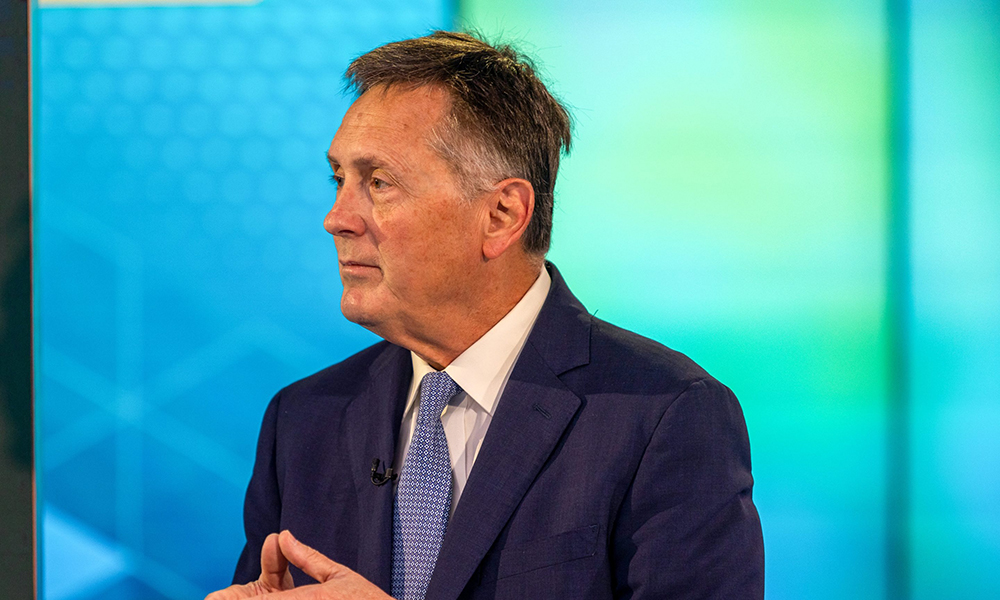
太平洋投资管理公司(Pacific Investment Management Co.)的理查德·克拉里达认为,美国经济表现出的韧性,可能令美联储不得不进一步加息以应对恶性通胀。
在彭博社于纽约召开的“未来的固定收益投资”(Future of Fixed Income)大会上,前美联储副主席克拉里达对汤姆·基恩表示:“应对通胀的工作自夏季以来便毫无进展,而且我们并未看到劳动力市场降温。对美联储而言,好消息是预期通胀相当稳定。”
最近几周,国债收益率大幅上涨,促使投资者纷纷降低了对美联储会在未来几个月提高借款成本的押注。据彭博社整理的数据显示,掉期交易商认为美联储在1月的会议上将进一步收紧货币政策的幅度仅为8个基点,这是他们预测的政策最高点,这意味着美联储再加息25个基点的概率约为32%。
克拉里达表示,上周早些时候,国债市场下跌使10年期国债收益率自2007年以来首次突破5%。此次下跌反映出多个因素的影响,包括债券供应、量化宽松结束和“杰罗姆·鲍威尔的长期维持更高利率”的立场。
克拉里达指出,美联储主席“正在更坚定地执行长期维持更高利率的政策,而且他背后有一个支持他的委员会。当前水平的债券收益率持续时间越长,我们就越有可能看到利率对经济的影响。”
但他很快指出,货币政策对整体经济的影响正在发生变化。他表示企业已经“延长了债务期限,而消费者锁定了较低的30年固定利率”。
太平洋投资管理公司的全球经济顾问克拉里达指出,美联储面临的一个更大挑战是决定何时开始降息。
他表示:“当鲍威尔领导的美联储开始降息,但通胀并未恢复到2%时,情况就会变得非常有趣。鲍威尔期望的通胀率是2.1%,但也可能是2.6%或2.7%。到明年夏天,如果通胀降低到这个水平,美联储可能考虑在通胀达到2%之前着手降息。因为通胀难以控制,因此问题在于,是在2024年初还是在更晚的时候降息。”
关于最近几年美元的升值,他表示美元“确实可能出现每10年一次的长期走势。美联储下调利率将会缩小利率差异,而美元将会恢复到更正常的水平。”(财富中文网)
—— 本文得到了爱德华·博林布罗克的协助。
翻译:刘进龙
审校:汪皓
太平洋投资管理公司(Pacific Investment Management Co.)的理查德·克拉里达认为,美国经济表现出的韧性,可能令美联储不得不进一步加息以应对恶性通胀。
在彭博社于纽约召开的“未来的固定收益投资”(Future of Fixed Income)大会上,前美联储副主席克拉里达对汤姆·基恩表示:“应对通胀的工作自夏季以来便毫无进展,而且我们并未看到劳动力市场降温。对美联储而言,好消息是预期通胀相当稳定。”
最近几周,国债收益率大幅上涨,促使投资者纷纷降低了对美联储会在未来几个月提高借款成本的押注。据彭博社整理的数据显示,掉期交易商认为美联储在1月的会议上将进一步收紧货币政策的幅度仅为8个基点,这是他们预测的政策最高点,这意味着美联储再加息25个基点的概率约为32%。
克拉里达表示,上周早些时候,国债市场下跌使10年期国债收益率自2007年以来首次突破5%。此次下跌反映出多个因素的影响,包括债券供应、量化宽松结束和“杰罗姆·鲍威尔的长期维持更高利率”的立场。
克拉里达指出,美联储主席“正在更坚定地执行长期维持更高利率的政策,而且他背后有一个支持他的委员会。当前水平的债券收益率持续时间越长,我们就越有可能看到利率对经济的影响。”
但他很快指出,货币政策对整体经济的影响正在发生变化。他表示企业已经“延长了债务期限,而消费者锁定了较低的30年固定利率”。
太平洋投资管理公司的全球经济顾问克拉里达指出,美联储面临的一个更大挑战是决定何时开始降息。
他表示:“当鲍威尔领导的美联储开始降息,但通胀并未恢复到2%时,情况就会变得非常有趣。鲍威尔期望的通胀率是2.1%,但也可能是2.6%或2.7%。到明年夏天,如果通胀降低到这个水平,美联储可能考虑在通胀达到2%之前着手降息。因为通胀难以控制,因此问题在于,是在2024年初还是在更晚的时候降息。”
关于最近几年美元的升值,他表示美元“确实可能出现每10年一次的长期走势。美联储下调利率将会缩小利率差异,而美元将会恢复到更正常的水平。”(财富中文网)
—— 本文得到了爱德华·博林布罗克的协助。
翻译:刘进龙
审校:汪皓
The Federal Reserve may have to raise interest rates further to fight stubborn inflation amid a resilient US economy, according to Pacific Investment Management Co.’s Richard Clarida.
“Progress on inflation has stalled since the summer, and we are not seeing labor market slack,” the former Fed vice chair told Tom Keene Thursday at Bloomberg’s ‘Future of Fixed Income’ conference in New York. “The good news for the Fed is that expected inflation is pretty well anchored.”
Surging Treasury yields in recent weeks have prompted investors to dial back wagers that the central bank will boost borrowing costs in the months ahead. Swaps traders are pricing in just 8 basis points of further tightening at the central bank’s January meeting, which corresponds to the expected policy peak, suggesting a roughly 32% chance of another 25 basis point hike, according to data compiled by Bloomberg.
The Treasury market selloff that earlier this week drove the 10-year yield above 5% for the first time since 2007 reflects multiple drivers including bond supply, the end of quantitative easing and “Jay Powell’s higher-for-longer” message, Clarida said.
The Fed chair “is doubling down on higher-for-longer and has a committee behind him,” Clarida noted. “The longer bond yields stay at these levels, the more we will see the effects of these rates on the economy.”
Still, he was quick to point out that the transmission of monetary policy through to the broader economy is evolving, noting that companies have “termed out debt and consumers locked in low 30-year fixed rates.”
The global economic adviser at Pimco pointed out that a bigger challenge for the central bank may be deciding when to start cutting interest rates.
“Where the discussion gets interesting, is a situation where the Powell Fed starts to cut rates and inflation is not back to 2%,” he said. “Powell would like 2.1%, but it could be 2.6%, 2.7%. By next summer if we are there, then the Fed can think about lowering rates and do that before getting inflation to 2%. The question is does that happen early in 2024, or later as inflation proves sticky.”
As for the dollar’s strength in recent years, he noted that the greenback “does tend to go in these long waves once every 10 years. Once the Fed does adjust rates downward, it will close rate differentials and the dollar will return to a more normal level.”
— With assistance by Edward Bolingbroke






